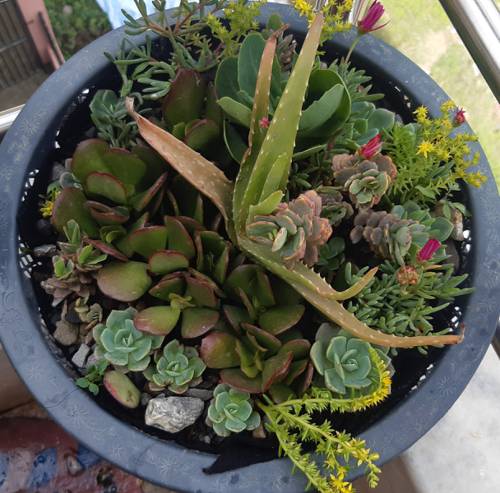
FAQ About Indoor Plant Thermoregulation Strategies

What are indoor plant thermoregulation strategies?
Indoor plant thermoregulation strategies refer to the various methods and adaptations that plants use to maintain their internal temperatures within a range that allows them to function optimally. This involves physiological and structural adaptations that help plants regulate their thermal environment, even when external conditions fluctuate.

Why is thermoregulation important for indoor plants?
Thermoregulation is crucial for indoor plants because it helps them optimize their metabolic processes, including photosynthesis, transpiration, and respiration. Maintaining an optimal internal temperature ensures that the plants can grow, uptake water, and nutrients efficiently, and resist stressful conditions such as high heat or cold.

How do indoor plants adapt to temperature changes?
Indoor plants adapt to temperature changes through a variety of strategies, such as altering leaf orientation, changing leaf or stem coloration, adjusting stomatal openings to regulate transpiration, and producing heat shock proteins that help them withstand higher temperatures.

What role does leaf orientation play in thermoregulation?
Leaf orientation can significantly impact a plant's ability to regulate its temperature. By changing the angle at which leaves face the light or away from heat sources, plants can reduce the amount of heat they absorb or enhance their cooling through elevated transpiration rates.

Do all indoor plants have the same thermoregulation strategies?
No, different species of indoor plants have evolved various thermoregulation strategies depending on their native environments. While some plants may have developed thick leaves to reduce water loss, others might have mechanisms to rapidly open and close stomata to control transpiration and cooling.

How do indoor plants use transpiration to control temperature?
Transpiration helps cool plants as water evaporates from leaf surfaces, dissipating heat. By adjusting the opening and closing of stomata, plants can control the rate of transpiration, allowing them to lose excess heat while maintaining hydration levels.

Can the color of a plant's leaves affect its temperature regulation?
Yes, the color of a plant's leaves can influence its ability to regulate temperature. Lighter colored leaves reflect more light and heat, helping to keep the plant cooler, while darker leaves may absorb more heat, which can be beneficial in cooler environments.

What are heat shock proteins and how do they help indoor plants?
Heat shock proteins (HSPs) are a group of proteins that are produced by plants in response to stressful conditions such as high temperatures. These proteins help protect other proteins within the plant from denaturation and damage, thus aiding in the survival and functionality of the plant under thermal stress.

How does humidity influence the thermoregulation of indoor plants?
Humidity affects the rate of transpiration in plants. High humidity can slow down transpiration, leading to decreased cooling of the plant, while low humidity increases transpiration, which can enhance cooling but may also lead to water stress if not managed properly.

Do indoor plants require special care during extreme weather?
Yes, during extreme weather conditions, indoor plants might need additional care such as temperature monitoring, adjusting watering schedules, and managing light exposure to ensure they maintain optimal internal temperatures.

What structural features help indoor plants regulate temperature?
Structural features such as thick leaves, a waxy coating, or hair-like structures on leaves can help reduce water loss and moderate temperature fluctuations by reflecting sunlight and reducing transpiration rates.

Can indoor plants acclimate to different temperature conditions over time?
Many indoor plants can acclimate to varying temperatures over time through gradual exposure, allowing them to adjust their physiological processes and become more resilient to temperature changes.

How does soil moisture affect indoor plant thermoregulation?
Soil moisture is critical for plant temperature regulation as it influences the plant's ability to perform transpiration. Sufficient soil moisture ensures that plants have enough water to evaporate from leaves, thus cooling the plant effectively.

Are there specific indoor plants known for better thermoregulation?
Some indoor plants, such as succulents and ferns, are particularly well adapted to regulate their temperature. Succulents store water in their leaves to manage heat stress, while ferns often thrive in varying humidity levels, helping them balance their internal temperatures.

How do artificial lighting conditions impact plant thermoregulation?
Artificial lighting can significantly impact plant thermoregulation by influencing both the internal temperature of the plant and the surrounding environment. Choosing the right type of lighting, such as LED lights that produce less heat, can help manage stress related to excess temperatures.

What is the role of stomata in plant thermoregulation?
Stomata are small openings on the surface of leaves that regulate the exchange of gases, including water vapor and heat. By opening and closing these pores, plants control transpiration, which is key to cooling the plant and maintaining a stable internal temperature.

How can indoor temperature be effectively managed for plant health?
Managing indoor temperature for plant health involves maintaining a consistent temperature range, using tools like fans for air circulation, considering humidity levels, and choosing an appropriate location in your home that avoids exposure to extreme temperature changes.

Why is root temperature important for overall plant health?
Root temperature is important because it affects nutrient uptake, water absorption, and overall metabolic processes. Roots must be kept at a stable temperature to ensure they can supply the plant with essential resources to thrive.

What common mistakes do people make regarding indoor plant temperature management?
Common mistakes include placing plants too close to heat sources or windows with intense sun exposure, failing to adjust care during seasonal temperature changes, and neglecting aspects such as humidity and airflow that contribute to effective temperature management.

How do seasonal variations impact indoor plant thermoregulation?
Seasonal variations can lead to changes in indoor temperature and humidity levels, requiring adjustments in care routines for indoor plants. During colder months, temperature regulation becomes crucial to prevent stress from drafts or heating sources.
